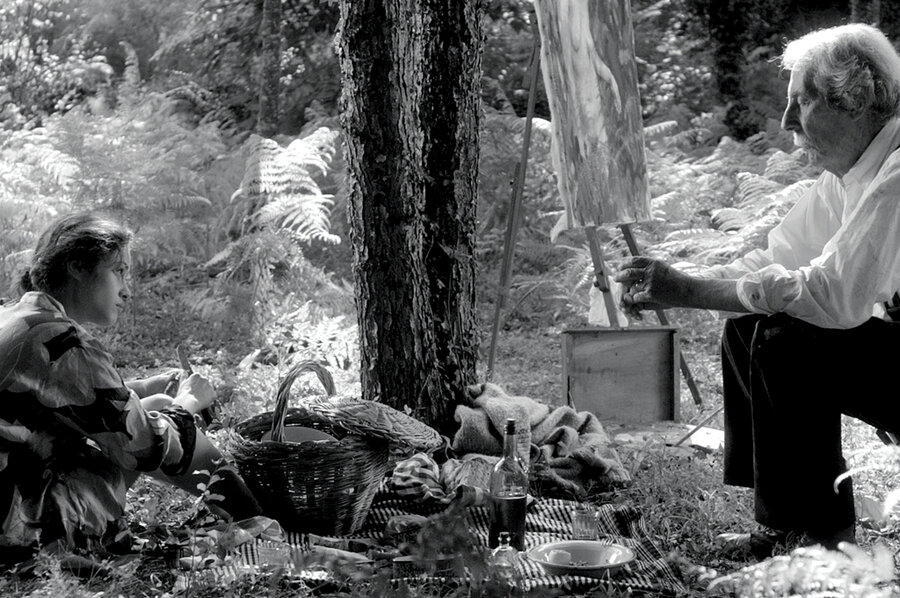'The Artist and the Model' weds lushness, innocence
Loading...
In Fernando Trueba’s “The Artist and the Model,” set in occupied France in the summer of 1943, we first see the 80-year-old sculptor Marc Cros (Jean Rochefort) picking his way gingerly through the countryside, parting the brambles with his cane. Clearly this is more than an outing for him; it’s a ritual. By himself, he can let his guard down and luxuriate in nature. In the company of his wife (Claudia Cardinale) and housekeeper (Chus Lampreave), he plays the role of cranky, pampered genius, although lately his inspiration has been flagging.
This all changes when he acquires a new model, Mercè (Aida Folch), a beautiful young Spanish girl who enters his life after fleeing a refugee camp in the south of France. Marc has spent his creative life molding women into artworks of grace and solidity. He sees in this “country girl,” who has never modeled before, and who has been working in the Resistance, a final chance to serve his muse.
Movies about artists, especially of the nonperforming variety, have a built-in handicap. The act of painting or sculpting is inherently undramatic, and so, to compensate, filmmakers often jack up the circumstances of the artist’s outer life. (This was evident, most recently, in the French film “Renoir.”) The result is that, in movies about artists, the artistry itself – presumably the reason we should care about these people in the first place – seems oddly irrelevant.
This doesn’t really happen in “The Artist and the Model,” which is shot in pearly black and white, perhaps because Trueba is careful to delineate Marc’s evolving creative process. He allows us to look at Mercè in the same way that Marc does – as a living sculpture and the apotheosis of femininity. And he does so without turning us into voyeurs.
It would have been easy (and maybe more commercially expedient) for Trueba to fasten on Mercè’s naked loveliness and turn Marc into an old goat. But he respects the artist’s mission. The film, which he wrote with the venerable screenwriter Jean-Claude Carrière, manages to be innocent and sensuous at the same time.
It is also, alas, a bit skimpy in filling out Marc’s side of the story. Although anti-Fascist, he professes not to care about the war’s outcome. “Men are savages,” he says to Mercè in one of his many dyspeptic pensées. “Nothing can be expected of them.” At Mercè’s urging, he shelters a wounded Resistance fighter, but he does so more out of pique than politics. Is Trueba saying that, for artists, or at least for this artist, nothing matters more than their muse? If this is so, he miscalculates, since Marc’s apolitical orneriness comes across as borderline noxious. He’s sculpting while Paris burns.
Marc’s desire to close out his life, which creeps up on us, also seems like a filmmaker’s wrongheaded conceit, since he is not suffering from any marked illness that we can see – he lives in pastoral splendor with a doting wife – and his inspiration has been rekindled. The fatalism does not arise organically from the material, or from Rochefort’s agile performance. It seems imposed by Trueba – an existential crisis he invented in order to provide an ending.
There is one scene in “The Artist and the Model,” though, that will remain with me. Marc, in his studio with Mercè, takes out a copy of a drawing of a family tableau by Rembrandt and exclaims, “How is such wisdom possible?” He examines each gesture in the drawing, every line, and Mercè, who intuitively understands Rembrandt’s intent, chimes in with her own thoughts. It’s a miniature art history lesson that is also a rapt communion between two people who, at least in this moment, are joined in the ecstasy of creation. Grade: B (Rated R for sequences of graphic nudity.)







